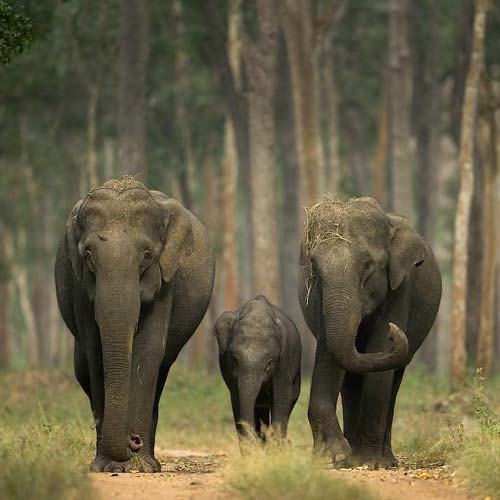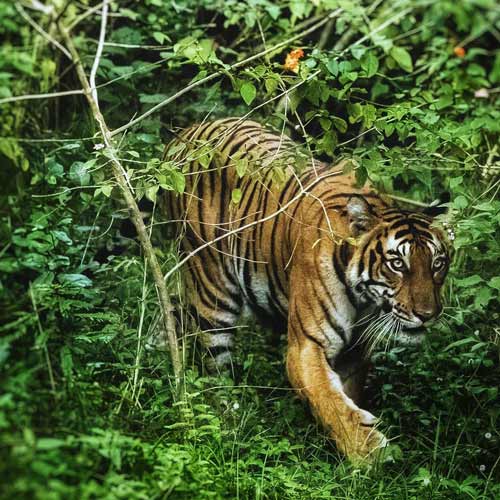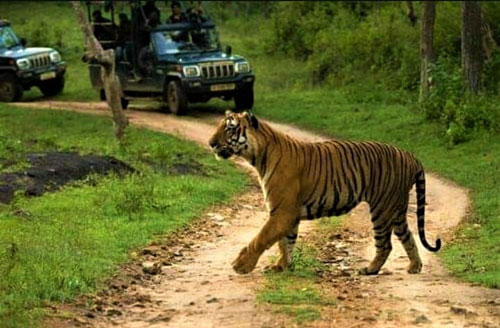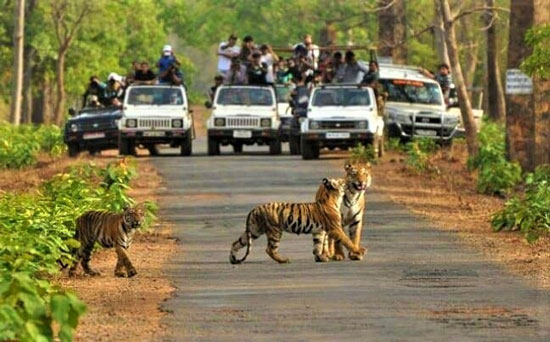Covering an area of 690 sq km of comparatively dry and rocky highlands of the state of Karnataka, the Bandipur Wildlife Sanctuary lies at an altitude of 1000 m above mean sea level. The degraded forest consists of good quality teak, sandal and other species of trees.
It was the personal shooting block of the ex-Maharaja of Mysore. The Mudumalai Wildlife Sanctuary in Tamil Nadu adjoins the Bandipur sanctuary, and the forest in continuous. Only the inter-state boundary separates them. The wild animals do not, obviously, respect the inter-state boundary and cross over unchecked to areas that offer more food and water. Today, more than fifty percent elephants in the forests of south India are found in Bandipur.
Asian elephant, Bonnet Macaque, Jungle Cat, Wild Boar, Indian Palm Squirrel, Golden Jackal, Indian Grey Mongoose, Bengal Fox, Ruddy Mongoose, Indian Elephant, Indian Pangolin, Langur, Tiger, Chital, Grizzled Indian Squirrel, Dhole, Sloth Bear, Leopard Cat, Stripe-necked Mongoose, Gaur, Lion-tailed Macaque, Leopard and Four-horned Antelope Chitals, Wild Boars, Gaur etc are a few other mammal species that inhabit the area.
The Kabini Dam and backwaters of the Kabini River, which flows north of the Bandipur National Park, attract huge flocks of birds like Serpent Eagle, Scops Owl, Barbets, Hornbills, Drongos, the yellow-legged Green Pigeon, Parakeets, Woodpeckers, Scarlet Minivets, and Warblers.
The roads in Bandipur have been named after the wild animals, probably to generate a feeling of closeness with them. More than 30,000 tourists visit Bandipur every year. Regarded as one of the most beautiful and the better-managed national parks of India, Bandipur Wildlife Sanctuary also offers picturesque views of the towering Western Ghat Mountains on the Mysore-Ooty highway.
Located at a distance of about 80 km from Mysore & Ooty and 215 km from Bangalore, this preserved land was established in 1930’s from the hunting lands of maharaja Voodiyar. It was later expanded in 1914 to adjoin the Mudumalai Wildlife Sanctuary of Tamilnadu, the Wayanad Sanctuary of Kerala and the Nagarhole National Park to create India’s biggest biosphere reserve generally referred to as the ‘Nilgiri Biosphere Reserve’. It was declared a Tiger Reserve in 1973 and was brought under the Wildlife Protection Act in 1974.
Tourists from far off places visit the place to enjoy wonderful safaris. These factors make Bandipur National Park an exotic paradise for wildlife lovers. March-July and September-November is considered as the best time to visit Bandipur.




